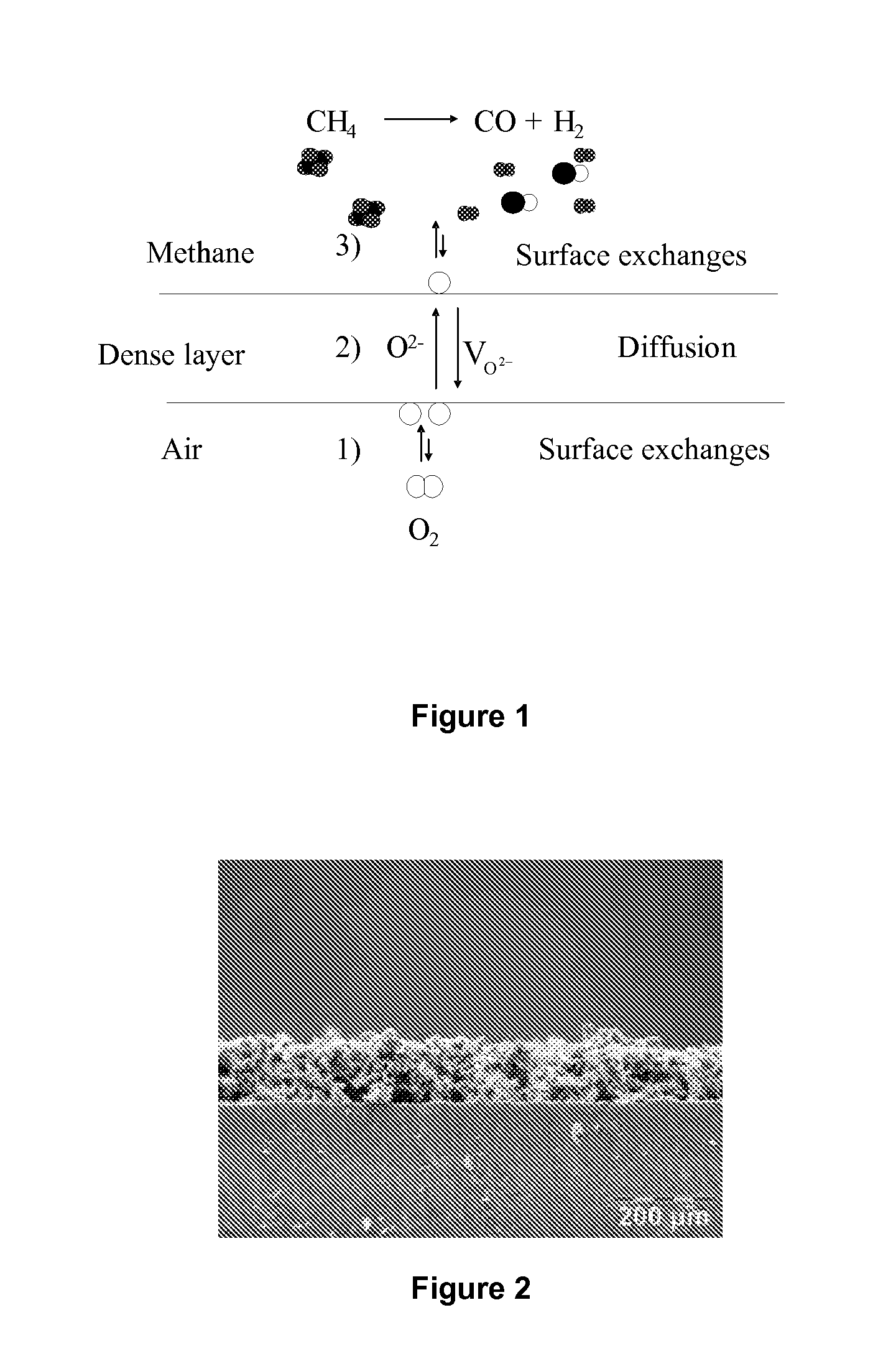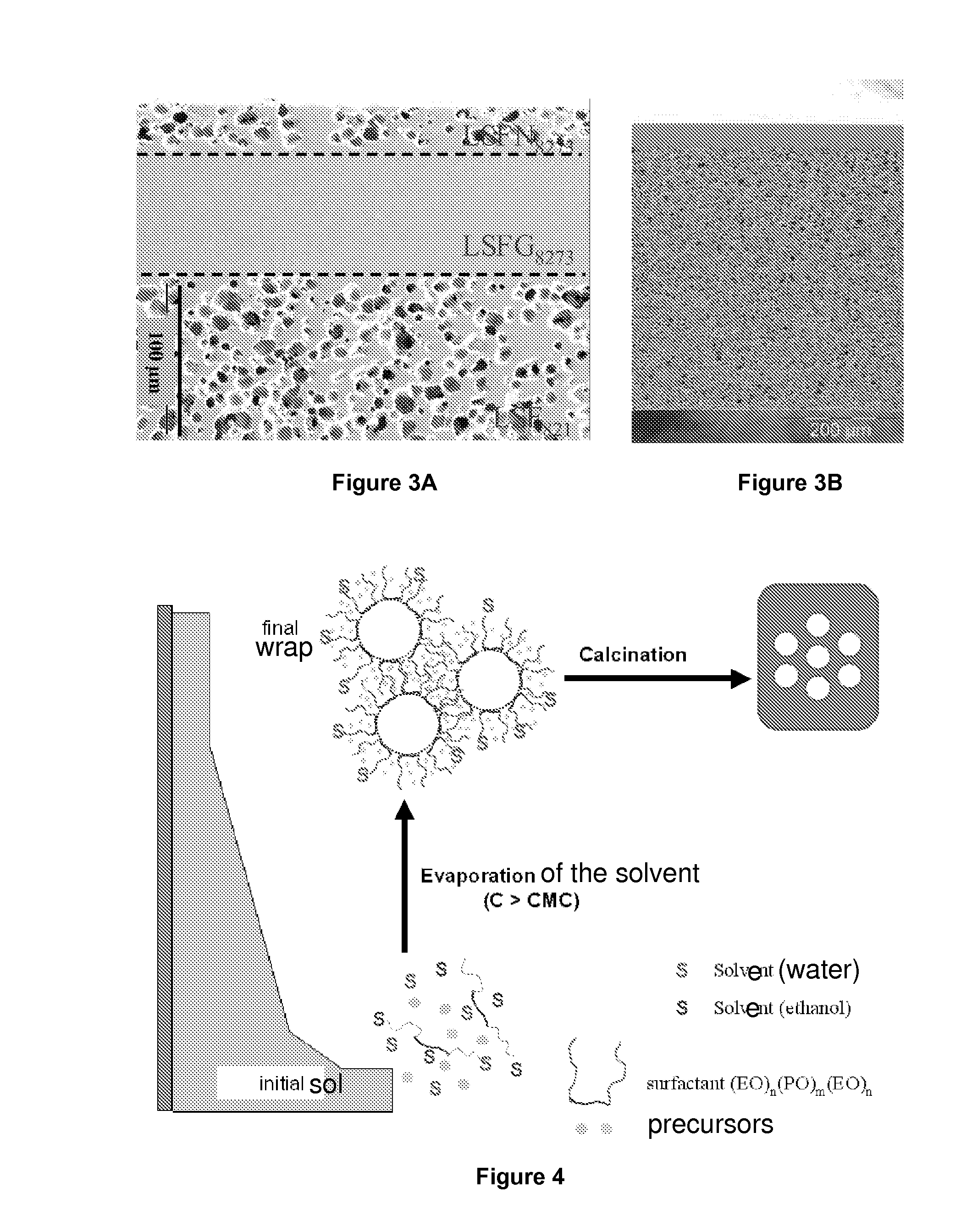Process For Preparing A Sol-Gel From At Least Three Metal Salts And Use Of The Process For Preparing A Ceramic Membrane
- Summary
- Abstract
- Description
- Claims
- Application Information
AI Technical Summary
Benefits of technology
Problems solved by technology
Method used
Image
Examples
Embodiment Construction
[0102]The following description of experiments illustrates the invention without limiting it.
[0103]Lanthanum, strontium, iron, and gallium nitrates, which are precursors of perovskite, are mixed in stoichiometric proportions needed to form a perovskite of structure La0.8 Sr0.2 Fe0.7Ga0.3 O3-δ with a non-ionic surfactant, in an ammonia / ethanol solution. The evaporation of the solvents (ethanol and water) allows the sol to wrap around surfactant micelles through the formation of bonds between hydroxyl groups of one salt and the metal of another salt. The controlling of the hydrolysis / condensation reactions caused by the electrostatic interactions between the inorganic precursors and the surfactant molecules allows a cooperative assembly of the organic and inorganic phases, which generates micelle aggregates of surfactants of controlled size within an inorganic matrix. The phenomenon of self-assembly is caused by the gradual evaporation of a solvent of a reagent solution, once the mice...
PUM
| Property | Measurement | Unit |
|---|---|---|
| Fraction | aaaaa | aaaaa |
| Fraction | aaaaa | aaaaa |
| Percent by volume | aaaaa | aaaaa |
Abstract
Description
Claims
Application Information
 Login to View More
Login to View More - R&D
- Intellectual Property
- Life Sciences
- Materials
- Tech Scout
- Unparalleled Data Quality
- Higher Quality Content
- 60% Fewer Hallucinations
Browse by: Latest US Patents, China's latest patents, Technical Efficacy Thesaurus, Application Domain, Technology Topic, Popular Technical Reports.
© 2025 PatSnap. All rights reserved.Legal|Privacy policy|Modern Slavery Act Transparency Statement|Sitemap|About US| Contact US: help@patsnap.com



